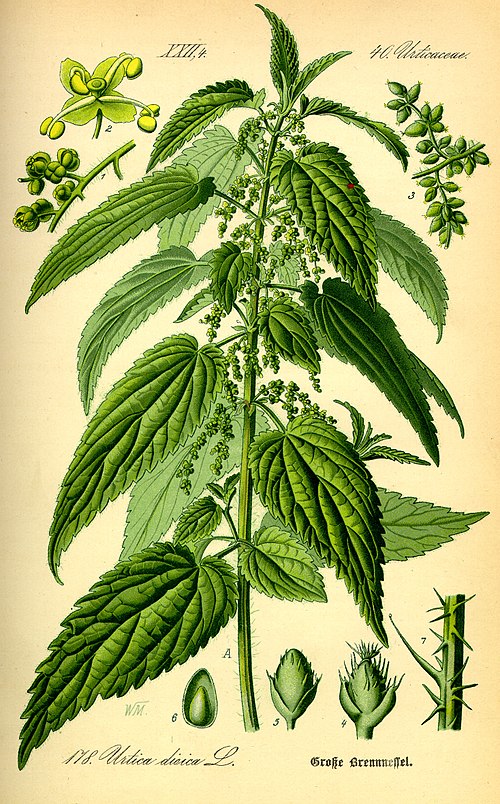Facts about Urtica dioica
Cultivation
- Compost soil with sand
- Peat-free organic soil
- Coconut fiber with fertilizer
- 2 times daily with spray bottle
- Prefers high humidity
Nutritional values per 100g
Medicinal Plant (Medicinal Plant of the Year 2022)
Recognized application: Nettle herb for irrigation therapy in inflammatory diseases of the urinary tract and for prevention of kidney stones. Nettle root for urination problems in benign prostatic hyperplasia stage I-II.
Active compounds: Flavonoids, caffeic acid derivatives, potassium salts, carotenoids, vitamin C, silicic acid, amines (histamine, serotonin)
Dosage: Tea infusion: 3-4 times daily pour 150ml boiling water over 2-4g dried leaves, steep for 10 minutes
Special notes: In young microgreens, the stinging hairs are not yet fully developed - therefore less "stinging"
Sources: Commission E Monograph (BfArM), HMPC Monograph EMA/HMPC/493013/2009, DAB (German Pharmacopoeia). Note: This information does not replace medical consultation. For complaints, consult a doctor or pharmacist.
Important cultivation notes
- Only use young nettle microgreens (up to approx. 4 weeks)
- Handle with gloves - even young plants can sting
- Blanch briefly before consumption or chew well (destroys stinging hairs)
- Do not use during pregnancy and breastfeeding
- Consult doctor in case of heart failure or impaired kidney function
Cultivation steps
- Soak nettle seeds for 24 hours in cold water
- Prepare nutrient-rich seed starting soil and thoroughly moisten
- Sow seeds evenly and cover lightly with soil (light germinator)
- Place in cool 15-20°C partial shade location
- Germination occurs after 14-21 days with consistent moisture
- Transfer to aquaponic system and maintain high humidity
- After 25-35 days, young nettle microgreens can be harvested with gloves
Context:




Add Comment